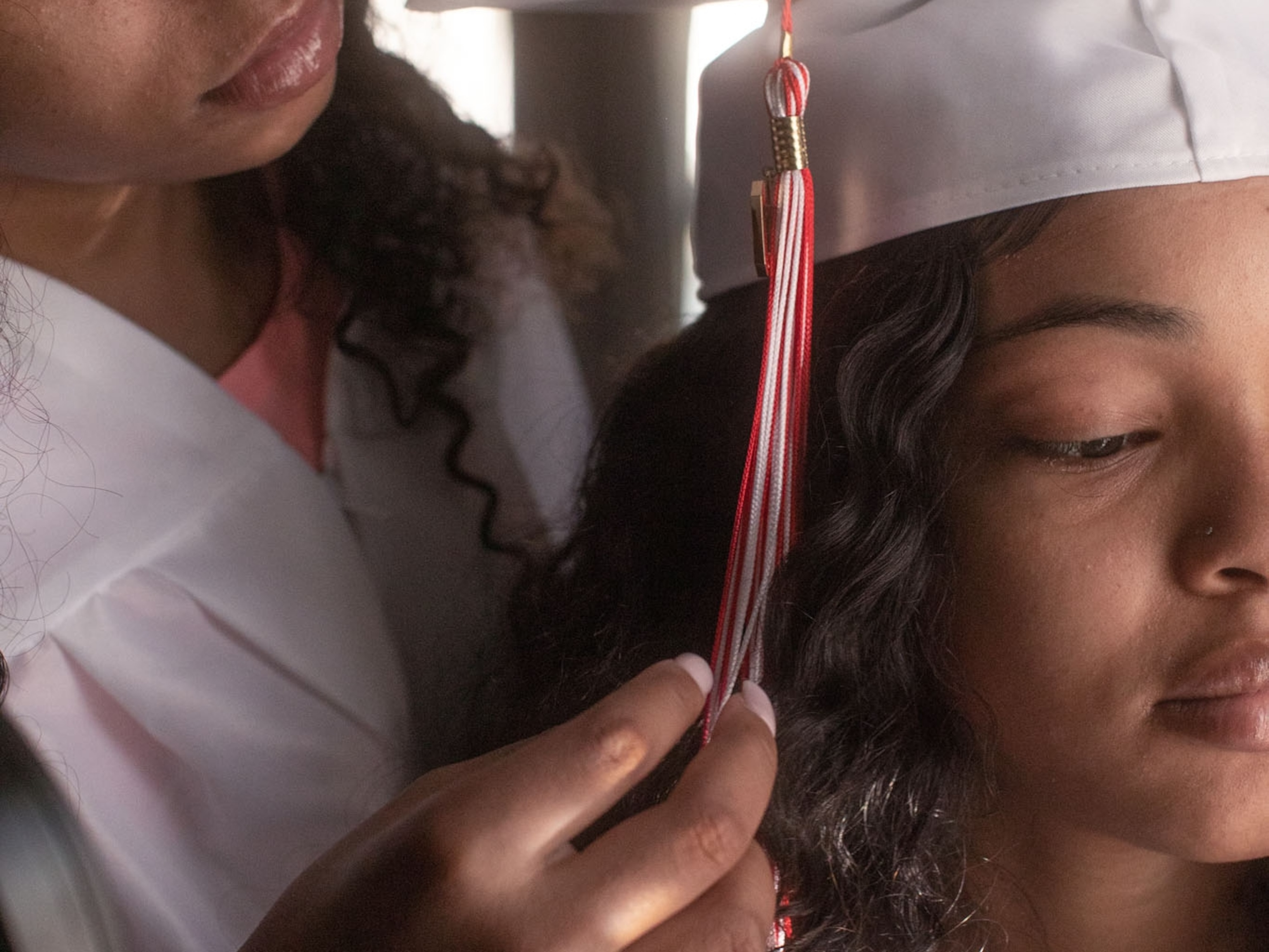
Glimpses of grief and resilience, captured over an unforgettable year
“The pandemic stripped away a lot of fears and amplified my desire to connect with others.” One year into COVID-19, photographers reflect on their own images.
It was a moment we will never forget. Professional sporting events were canceled, colleges sent students home, the lights went out on Broadway, offices closed their doors. Last March, the world went on lockdown as COVID-19 swept across the globe.
The projected toll was then unimaginable. Since the World Health Organization declared the coronavirus a pandemic one year ago, more than 118 million cases of COVID-19 have been recorded worldwide and more than 2.6 million people have lost their lives. The United States leads the world in COVID-19 cases and deaths: More than 29 million people have contracted the virus and more than 520,000 have died.
It was a year that tested our humanity. Hospitals were overwhelmed. Funeral homes raced to keep up. Millions lost jobs. Acute hunger increased dramatically. Family members stayed away from each other.
During the pandemic, the National Geographic Society launched an emergency fund to support journalists covering COVID-19. From resilience to reconnection, photographers captured impactful moments of people around the world, dealing with the pandemic in different ways. We asked some of the grant recipients to choose the image that most resonated with them and share their reflections.
Rita Harper photographed geriatric nurse Breonna Leon in Atlanta, Georgia, who has cared for many COVID-19 patients who passed away. Harper says she wanted to document how urban communities have been affected due to reduced resources, pre-existing conditions, and limited access to care.
Photographer Gab Mejia captured wildlife rangers in the Philippines bidding their last farewell to the lone captive-bred tamaraw on the planet. There are an estimated 500 tamaraw, the world’s rarest buffalo species, left in the wild. Lockdowns and economic hardships have impeded wildlife conservation efforts as each loss brings the species closer to extinction.
“It was a traumatic experience to witness the death and corpse of the critically endangered tamaraw,” Mejia said. “More so, the hardships that the pandemic has brought on the wildlife rangers, who have dedicated their lives in saving this rare species in the Philippines. The stringent lockdowns made it so much more difficult to document in wildlife conservation sites due to the fear brought by COVID-19.”
Though some are hopeful that the struggles of the pandemic may be nearing an end, for most—particularly the relatives and friends of those who have died—this devastating year will forever impact our lives.





















This work was supported by the National Geographic Society's COVID-19 Emergency Fund for Journalists.
Related Topics
You May Also Like
Go Further
Animals
- Fireflies are nature’s light show at this West Virginia state parkFireflies are nature’s light show at this West Virginia state park
- These are the weird reasons octopuses change shape and colorThese are the weird reasons octopuses change shape and color
- Why young scientists want you to care about 'scary' speciesWhy young scientists want you to care about 'scary' species
- What rising temperatures in the Gulf of Maine mean for wildlifeWhat rising temperatures in the Gulf of Maine mean for wildlife
- He’s called ‘omacha,’ a dolphin that transforms into a man. Why?He’s called ‘omacha,’ a dolphin that transforms into a man. Why?
Environment
- What rising temperatures in the Gulf of Maine mean for wildlifeWhat rising temperatures in the Gulf of Maine mean for wildlife
- He’s called ‘omacha,’ a dolphin that transforms into a man. Why?He’s called ‘omacha,’ a dolphin that transforms into a man. Why?
- The northernmost flower living at the top of the worldThe northernmost flower living at the top of the world
- This beautiful floating flower is wreaking havoc on NigeriaThis beautiful floating flower is wreaking havoc on Nigeria
- What the Aral Sea might teach us about life after disasterWhat the Aral Sea might teach us about life after disaster
History & Culture
- Scientists find evidence of ancient waterway beside Egypt’s pyramidsScientists find evidence of ancient waterway beside Egypt’s pyramids
- This thriving society vanished into thin air. What happened?This thriving society vanished into thin air. What happened?
Science
- Why pickleball is so good for your body and your mindWhy pickleball is so good for your body and your mind
- Extreme heat can be deadly – here’s how to know if you’re at riskExtreme heat can be deadly – here’s how to know if you’re at risk
- Why dopamine drives you to do hard things—even without a rewardWhy dopamine drives you to do hard things—even without a reward
- What will astronauts use to drive across the Moon?What will astronauts use to drive across the Moon?
- Oral contraceptives may help lower the risk of sports injuriesOral contraceptives may help lower the risk of sports injuries
- How stressed are you? Answer these 10 questions to find out.
- Science
How stressed are you? Answer these 10 questions to find out.
Travel
- How to make perfect pierogi, Poland's famous dumplingsHow to make perfect pierogi, Poland's famous dumplings
- The best long-distance Alpine hike you've never heard ofThe best long-distance Alpine hike you've never heard of
- Fireflies are nature’s light show at this West Virginia state parkFireflies are nature’s light show at this West Virginia state park
- How to explore the highlights of Italy's dazzling Lake ComoHow to explore the highlights of Italy's dazzling Lake Como
- Going on a cruise? Here’s how to stay healthy onboardGoing on a cruise? Here’s how to stay healthy onboard




